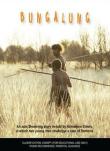
The material on this page is available to AustLit subscribers. If you are a subscriber or are from a subscribing organisation, please log in to gain full access. To explore options for subscribing to this unique teaching, research, and publishing resource for Australian culture and storytelling, please contact us or find out more.
Latest Issues
AbstractHistoryArchive Description
'Around a camp fire, two young Anmatjere elders, Patsy and Jane Briscoe, sing and tell the epic dreaming story of two young men, forced into action when a clan of demon cannibals devour their entire tribe, and kidnap women: a journey into the supernatural, a scary aspect of dreamtime storytelling designed to ensure the safety of Aboriginal children and enhance their spiritual intuition.' Sourced: http://caama.com.au/category/productions/page/2/ (Sighted 04/05/2009)
Notes
-
This film is in Anmatjere language
Publication Details of Only Known VersionEarliest 2 Known Versions of
Last amended 22 May 2017 11:55:50
Export this record



